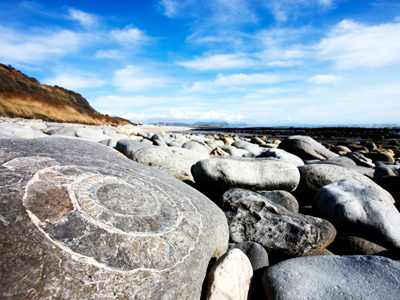Some people are so excited by finding evidence of the past that they study it when they grow up. A person who studies past life or more correctly the evidence of past life is known as an archeologist.
Archeology is simply the study of the past and learning how things lived, survived, interacted and eventually died. It is also the study of entire civilizations and cultures.
To learn about civilizations and cultures, archeologists go beyond just studying fossils. They also study items that are unearthed through archeological digs. These items include jewelry, utensils, weapons, clothing, pottery, building structures, agricultural methods, etc. All of these things are known as artifacts. So the difference between fossils and artifacts is that fossils are the remains of once living things and artifacts are the remains of items living things used and/or created.
For most people when they hear that someone is an archeologist they tend to believe that they like to dig in the dirt to find ancient treasures. Well, that is part of it, but the field of archeology is much wider than that. In fact, there are six basic fields of archeology and these are:
- Historical Archeologists: Historical archeologists study records (written or pictorial) that were left behind and then compare those records to the artifacts found along with the records.
- Underwater Archeologists: Underwater archeologists don’t dig in the deserts but, rather, they study the wreckages of sunken ships, as well as submerged buildings, cities (such as Atlantis) and artifacts.
- Environmental Archeologists: Environmental archeologists study plant and animal remains to see if they can determine how they survived and/or perished in their environment. What foods did they eat? How did they protect themselves and so on?
- Zoo Archeologists: Unlike the environmental archeologists who study both plant and animal remains, a zoo archeologists specifically focuses on studying the remains of animals.
- Geo-Archeologists: A geo-archeologist studies how land forms and how land masses have changed over time. They also study how people adapted to the land and used the land.
- Oral Historians: One might not think of this type of person as an archeologist but since they study people and cultures and how the cultures lived, they are, indeed, part of the archeological field of study.
So, how do archeologists begin their exploration? After all, they can’t just throw a dart and say they’ll start there. Nope. The first thing an archeologist needs to do is to conduct a survey of a site. Today archeologists have the assistance of instruments that can penetrate the Earth’s surface and give back images of what might lie below that surface.
Once an archeologist has pinpointed a starting point to begin their exploration, a flag is placed at the starting point. This starting point is known as the datum point. From the starting point or the datum point, a gridline is mapped out into sections that can be as small as one foot by one foot square and branch out to even bigger squares that may be as wide as 10 feet by 10 feet.
With careful precision, the dirt and rocks are sifted in order to spot even the tiniest of artifacts. As the depth of the soil goes down, the archeologist can study cultures and time periods. The practice of studying the soil to determine cultures and time periods is known as stratigraphy. As artifacts are located, they are then numbered and documented at which level of the soil they were found in and in which grid section.
Like any area of study, archeology has its own set of vocabulary words. Among some of the more basic words are the following:
Archeology Vocabulary
Assemblage – This refers to artifacts that were found together and are presumed to have been used at the same time for similar and/or related tasks.
Attribute – This is the characteristic of an object such as its weight, size and/or color.
Culture – This is a set of beliefs, values and behaviors that were commonly practiced and shared by a society.
Diagnostic Artifact – This is an artifact that is related to a specific time period or to a particular culture.
Feature – This refers to a type of material remains that cannot be removed from an excavation site. Examples would include pits, fire hearths, floors, columns, steps, etc.
Grid – This is a uniformly spaced set of marked off squares that divide an archeological digging site.
Lithic – This is something that is made of stone.
Midden – This is an area that was used for trash disposal.
Pot Sherd – This refers to a broken piece of pottery.
Prehistoric – This refers to the period of time before there were any written records.
Among some of the most famous ancient city archeological digs are that of Pompeii and Herculaneum. Both of these cities were completely covered by ash when Mount Vesuvius erupted in 79 AD. The digs unearthed complete, intact artifacts and even complete human remains in the motion of trying to escape the heated ash.
Clearly, learning about the past and the lives that were lived, how they were lived and how they ended is fascinating making archeology one of the more widely sought after careers.
So what do you think, do you want to be archeologist? Well, whether you do or not, let’s see how much you have learned about the basics of archeology. Please review the following ten questions and then see just how many answers you can get correct.








